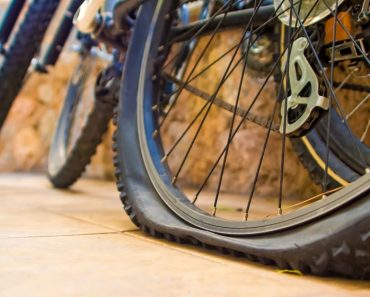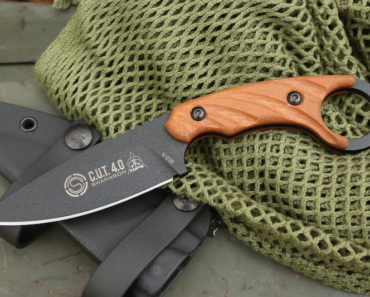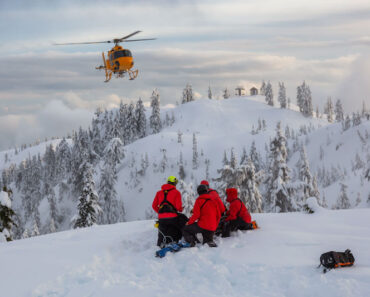I see a lot of articles online about “The Top 10 Bug Out Vehicles” according to someone or other. Most of those people probably aren’t preppers and have never seriously contemplated the need for a bug out vehicle or how they would use it. While the vehicles they put on their lists are all great, from a “tacticool” point of view, I’m not absolutely sure that they’re the best bug out vehicle for anyone, let alone for everyone.
Oh sure, there’s a desire deep within many of us to have that super-cool 4×4 or even tactical vehicle. There are some really great wheeled tactical vehicles around, for those who have a half-million dollars to spend. There’s even a company out there producing a civilian tank, which I’d love to own. But if there’s anything that would scream “I’m prepared for a disaster” to the world around us, it’s one of these vehicles. Is that really the message we want to send?
Where I live, anyone can get away with owning a big four-wheel-drive truck or SUV. There are plenty of them on the road. But what about someone living in Los Angeles or New York City? Wouldn’t that be a bit conspicuous. Maybe it wouldn’t be as conspicuous as the bomb-proof wheeled tactical vehicle; but it would be a bit too obvious nonetheless.
The purpose of any bug out vehicle is to get you from point A – your home – to point B – your survival retreat, with the least amount of problem. That may require going off-road in a four-wheel-drive vehicle, but if it doesn’t and that vehicle would be too conspicuous, is that a good decision.
So, What Does Your Bug Out Vehicle Need?
Before buying any bug out vehicle, it would be helpful to take some time to sit down and decide just what is needed for your particular situation. That may very well be different than what I would need for my situation or what anyone else you might know needs. There is no “one size fits all” answer in prepping and survival, so you have to look at your own needs.
Looking at your needs starts out with having a bug out plan. It’s going to be awfully difficult to figure out what kind of vehicle you need, if you don’t have any idea of where you’re going or the route you’re going to use to get there. I don’t care how good a four-wheel-drive vehicle you find, if your survival retreat is on an island, without a bridge, you probably can’t drive that vehicle there.
So, let’s look at a few basic needs to consider:
Inconspicuous
I personally think the number one requirement for any bug out vehicle is that it is inconspicuous. The last thing you want to do is attract attention, as those who will pay attention to you, will probably cause problems for you. That problem may be nothing more than bugging you for a ride; but even that can slow you down.
As I mentioned a moment ago, you can get away with that big 4×4 pickup, if you live somewhere where they are common. But in reality, the biggest thing that four-wheel-drive vehicles do for you is give you more ground clearance. That, more than having four driven wheels, helps you get through when going off-road. You can raise pretty much any vehicle up a couple of inches, by modifying the suspension and putting on bigger tires.
But don’t just think in terms of the vehicle chassis; think in terms of the paint job too. A bright yellow vehicle is going to attract attention, no matter what sort of vehicle it is. You’re better off going with a literal definition of “grey man” and having your bug out vehicle painted grey.
Reliability
Whatever you choose to use as a bug out vehicle, make sure it is reliable. That not only means buying a vehicle you can count on, but lovingly maintaining it, making sure that all the preventative maintenance is done and that anything which needs repairing is repaired as soon as possible.
I personally prefer older vehicles, simply because they are easier to work on. Newer vehicles have so much electronics on them, that you need special equipment to troubleshoot them. But the vehicles I grew up with weren’t like that. They didn’t have computers and the average teenager could point out every component under the hood and tell you what it did. That ability could be very handy in a bug out situation, where getting your care fixed could be a problem.
Roomy
You’ve got to make sure that whatever vehicle you get has enough room to meet your needs. That means having enough room for all your family members to sit comfortably, as well as enough cargo space to carry all the gear and supplies you’ll be taking with you. For a family, that means a pretty good-sized vehicle; but if you’re single or just a couple, you can get by with something fairly small.
I like using roof pods to expand my available cargo space, but you’ve got to be careful about that. If you’re stuck in traffic, people can try to get into your roof pod or even remove it from the vehicle. So, you need to make sure that it is well secured and locked if you’re going to use it.
Avoid attaching gas cans and other gear to the outside of your vehicle. It will look cool, but also advertise to everyone around that you’re prepared. Considering that they’ll probably run out of gas, your gas cans can create a lot of hassles with people asking you for fuel.
Range
One of the biggest problems that can happen in any bug out is running out of gas. If your bug out coincides with a general evacuation, there will be thousand of cars on the road and the roads will quite likely turn into a miles long parking lot, with people burning gas just idling. They’ll run out of gas and the gas stations will too.
One solution to this is to have a fuel-efficient vehicle. But those tend to be small, which may not meet your other requirements. The other option is to take spare fuel along with you, either in a second gas tank mounted to the vehicle or in gas cans. If you can mount a second gas can, like some pickup trucks have, that’s great. But if not, you’re stuck with gas cans. Those could go very well in the roof pod, keeping them out of the vehicle’s cabin, while also being out of sight.
Repairability
Another good thing to consider is how easily your vehicle can be repaired. There is always a chance that you’ll break down somewhere along the way, even if you maintain your vehicle. Having a vehicle that you are accustomed to working on, so that you can do the work yourself.
I used to have an old Winnebago motorhome, which I traveled in for several years. During the years I owned it, I had so many serious engine problems with it, that I got to the point where I could pull the engine in four hours. If you’ve ever worked on a motorhome, you will understand what that means; it’s a lot harder than pulling an engine from a car or pickup. But I knew where every nut and bolt were located, what size it was, and what angle I had to get at it from. It was a pain to work on, but for me, it was a very repairable vehicle, because I knew how to work on it.
Stock Your Vehicle Wisely
Besides buying the right vehicle, you want to make sure that you set the vehicle up for bugging out. That doesn’t so much mean adding accessories to the vehicle, as it means carrying the right things along to make sure that you’re ready for any vehicle-related emergencies. You don’t want to have to abandon your vehicle just because something goes wrong. You want to be able to take care of the problem.
Through the years, I’ve put together a list of things I keep in my vehicle, just to take care of such emergencies. I can guarantee you, none of them would be left behind during a bug out.
- Tow strap – sometimes you’ve got to pull someone out, just to get them out of your way
- Jumper cables
- Jumper battery – one of the small portable ones; not necessary if you have two batteries mounted under the hood
- Engine chemicals – just in case a refill is needed
- Water – engine coolant
- Spare hoses and hose patches – you can make a pretty effective patch with a tube union and a couple of hose clamps, but you’ll need it for every size hose under the hood
- Spare belt
- Basic kit of tools – combination wrenches, ratchet & sockets, screwdrivers, pliers
- Come along – for pulling out, when stuck; a winch is better, if you’ve got it
- Heavy-duty rope
- Small shovel – for digging out tires, if I get stuck
- Machete – useful for a lot of things
- Bow saw – for cutting tree branches
- Traction bars – strap on tires, intended for snow, but work for other things too
- Tire patch
- Small compressor to fill the tires
- Hydraulic jack – usually better than what came with the vehicle
- Star wrench – also better than what came with the vehicle
I’m sure there are other things you could add to this list, based on your own experience and your own bug out plan; but this list has served me well through the years. Keep in mind that you need what works for you, not what works for me. These things are actually in my vehicle all the time, kept there as an emergency kit, just in case I need it. None of them have anything to do with my survival gear or bug out gear, although they could prove to be essential in a bug out.
One Last Comment
For those who are wondering, I have two vehicles set up to be my bug out vehicles. One is my wife’s Kia Sorento. That’s our main daily drive vehicle and we live in a small community. Since we drive back and forth to the city all the time, I assume that we might have to use it for a bug out sometime; so, I keep it prepared.
The other is my 1990 Toyota 4-Runner, which is my project truck. When it is ready, it will take over as our primary bug out vehicle. But I need to mention, I live in an area where driving that vehicle is not conspicuous, or I never would have chosen it for a bug out vehicle. I hope to make it a camping vehicle as well, with a sleeping area in back, solar panels, a built-in kitchen and solar hot water heating for taking a shower. While those things will make it great for bugging out, they aren’t actually necessary. They’re more for fun.




























